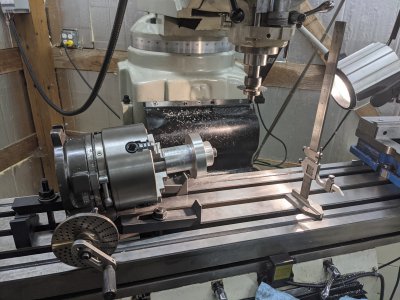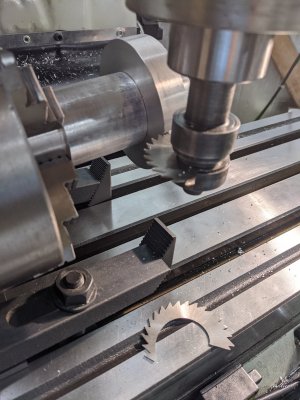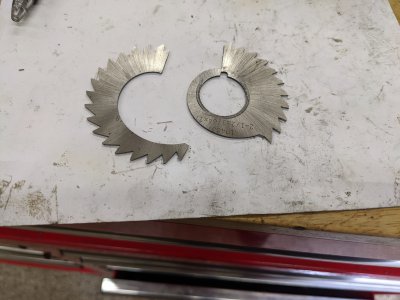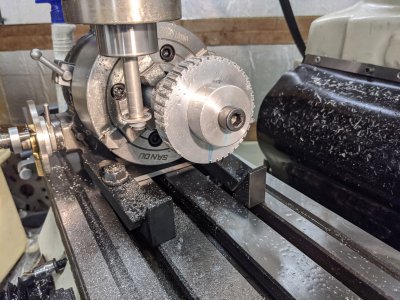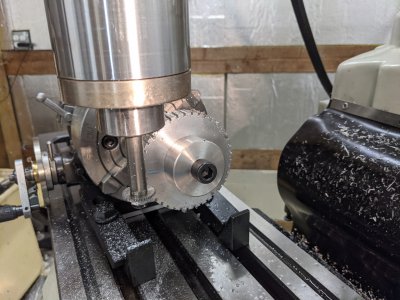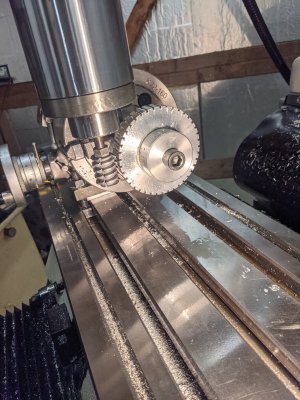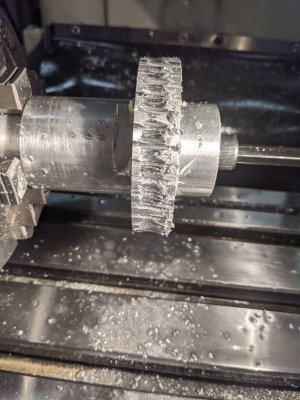Slow down. Slow WAY down.
The first pass should barely make a good nick on the part, and the part should be turning freely. You may have to help it around with a little pressure on the back side of the blank to insure the hobb teeth land in the grooves. The hobb has to be turning slow for that. 30rpm or less. After that has gone around the blank a couple times, feed in only a few thousandths, and let that go around a few times. Still helping the blank turn as necessary. Once the grooves are well established (it goes around itself without help or losing track), you can crank in a 5 thou cut and also speed up the rpm. Maybe go to 10 once the chamfer of the hobb teeth are well below the surface of the cut.
It's a lot like hand tapping in that the first few turns are the most important and establish the cut for all that follow. Only after the grooves are well establish can you increase the depth of each cut, but you have to make sure those first cuts start straight.
